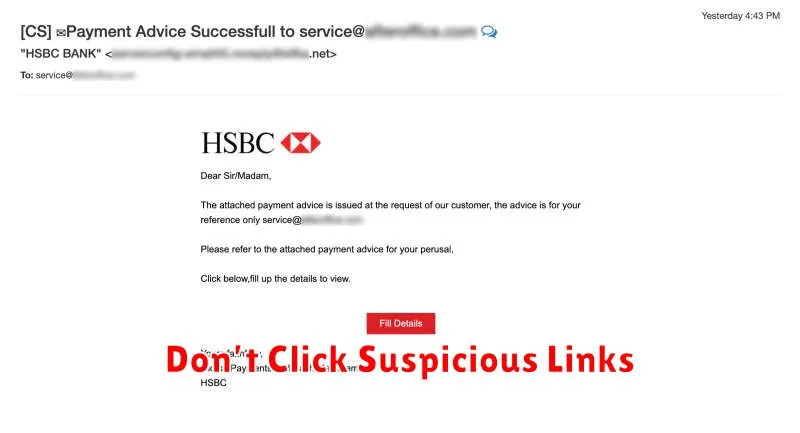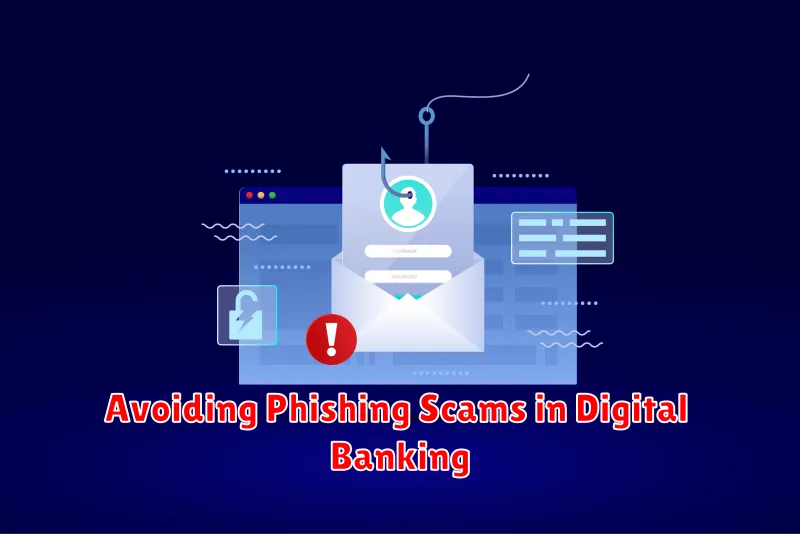In today’s increasingly digital world, the convenience of online banking comes with inherent risks, most notably phishing scams. These deceptive practices pose a significant threat to your financial security, employing various tactics to steal sensitive information such as usernames, passwords, and credit card details. Understanding how to identify and avoid phishing scams is crucial for protecting yourself and your finances in the digital banking landscape. This article will provide essential information on recognizing common phishing techniques, empowering you to navigate online banking safely and confidently.
Phishing attacks often target unsuspecting individuals through seemingly legitimate emails, text messages, or website pop-ups. These fraudulent communications typically mimic legitimate banking institutions, attempting to lure you into revealing your confidential information. By being aware of the telltale signs of phishing attempts, such as suspicious links, requests for personal information, and generic greetings, you can significantly reduce your vulnerability to these online scams. This guide will equip you with the knowledge and tools necessary to identify and avoid phishing scams, ensuring the protection of your digital banking experience.
Recognize Phishing Red Flags
Phishing attempts often exhibit telltale signs. Learning to recognize these red flags is crucial for protecting yourself. Be wary of communications that create a sense of urgency, pressuring you to act quickly without thinking.
Look closely at the sender’s email address. Phishing emails frequently use addresses that mimic legitimate organizations but contain slight variations. Typos and grammatical errors are also common indicators of phishing attempts.
Be suspicious of requests for personal information. Legitimate banks and financial institutions rarely, if ever, request login credentials, account numbers, or social security numbers via email. Hover over any links before clicking. If the displayed URL doesn’t match the linked text, it could be a phishing link.
Don’t Click Suspicious Links

One of the most common phishing tactics involves sending emails or text messages containing malicious links. These links may appear legitimate, often masquerading as official communications from your bank or other trusted institutions.
Never click on links directly from an email or text message, especially if the message is unexpected or requests sensitive information. Instead, manually navigate to the official website by typing the address directly into your browser or using a trusted bookmark.
Be particularly wary of links that:
- Use URL shortening services.
- Contain unusual characters or misspellings.
- Direct you to an unfamiliar domain.
If you are unsure about a link’s legitimacy, contact your bank directly through official channels to verify its authenticity.
Verify Sender Identity
Confirming the sender’s identity is paramount in preventing phishing attacks. Phishing emails often masquerade as legitimate communications from your bank or other trusted institutions.
Carefully examine the sender’s email address. Look for misspellings or slight variations from the official domain name. For example, if your bank’s domain is “yourbank.com,” be wary of emails from “yourbank.net” or “y0urb4nk.com.”
If the email appears to be from a trusted organization, do not click on any links within the email itself to verify the sender. Instead, navigate directly to the organization’s official website or contact them through a known, verified phone number.
Scrutinize the salutation. Generic greetings like “Dear Customer” or “Valued Client” can be a red flag, particularly if your bank typically uses your name. This lack of personalization can indicate a phishing attempt.
Report Fraud Immediately
If you suspect you’ve been a victim of a phishing scam, immediate action is crucial. Report the incident to your bank without delay. The sooner you notify them, the better the chances of mitigating potential damage.
Provide your bank with as much information as possible, including the date and time of the incident, the nature of the scam (e.g., phishing email, text message), and any details you have about the fraudulent activity. This may include sender information, account numbers involved, or transaction amounts.
Do not hesitate to report suspicious activity. Even if you’re unsure if you’ve been scammed, it’s better to err on the side of caution. Your bank has dedicated teams to investigate these incidents and provide support.
Use Official Bank Apps Only
Protecting your financial information is paramount in today’s digital landscape. When accessing your bank accounts via mobile, always use the official bank app. Downloading apps only from official app stores (such as Google Play Store or Apple App Store) significantly reduces the risk of installing fake banking apps designed to steal your credentials.
These fraudulent apps often mimic legitimate banking apps in appearance and functionality, making it difficult to distinguish them from the real thing. They might request permissions that a genuine banking app wouldn’t need, such as access to your contacts or messages. Be wary of apps asking for excessive permissions.
Verify the app’s authenticity by checking the developer information, user reviews, and ratings before downloading. If anything seems suspicious, err on the side of caution and contact your bank directly to confirm the app’s legitimacy.
Ongoing Cybersecurity Practices
Beyond immediate actions, consistent cybersecurity practices are crucial for long-term protection against phishing and other cyber threats. Regularly updating your software, including operating systems, web browsers, and antivirus programs, patches vulnerabilities that phishers exploit. This is a fundamental step in maintaining a secure digital environment.
Strong password management is also essential. Use unique, complex passwords for each of your online accounts, including your digital banking platform. Consider using a reputable password manager to securely store and generate these passwords. Multi-factor authentication (MFA) adds another layer of security, making it significantly harder for attackers to gain access even if they obtain your password.
Regularly review your account activity for any unauthorized transactions. Report any suspicious activity to your bank immediately. Staying informed about current phishing techniques and online security best practices is crucial. Be aware of evolving threats and adapt your security measures accordingly.

